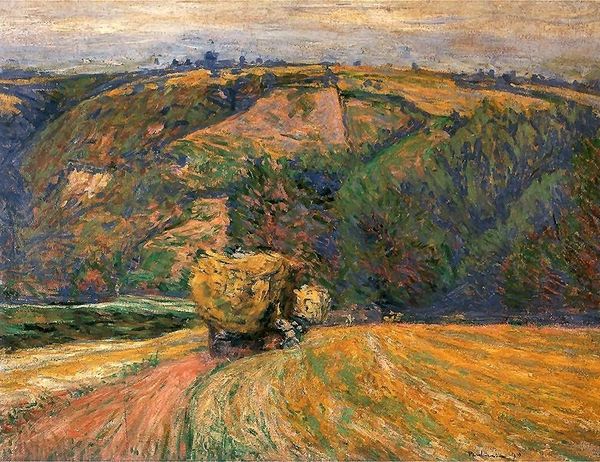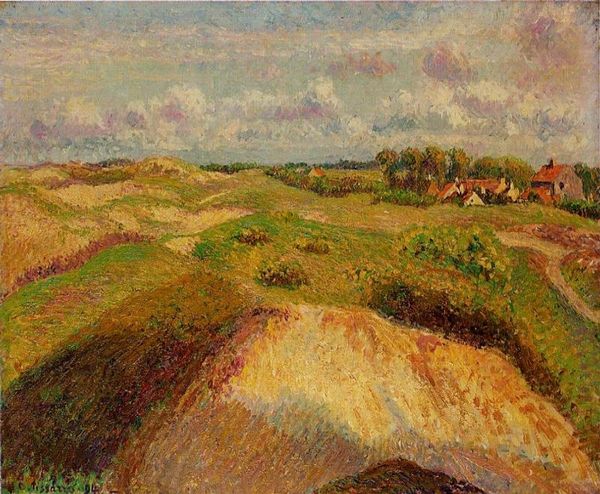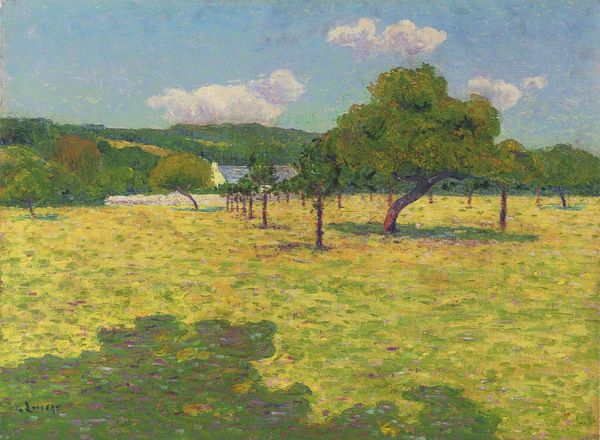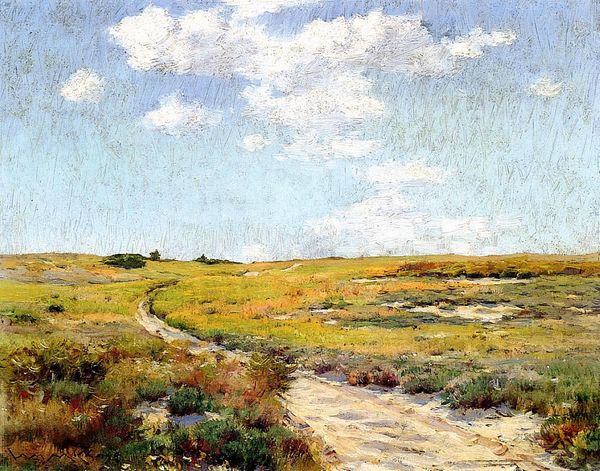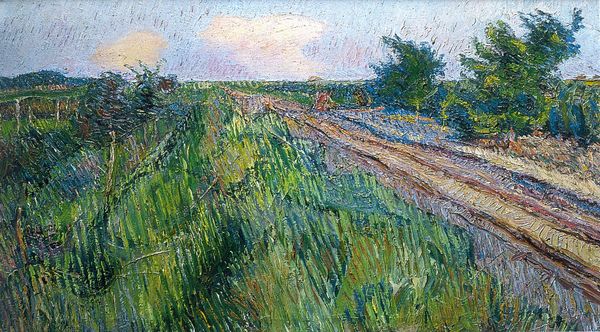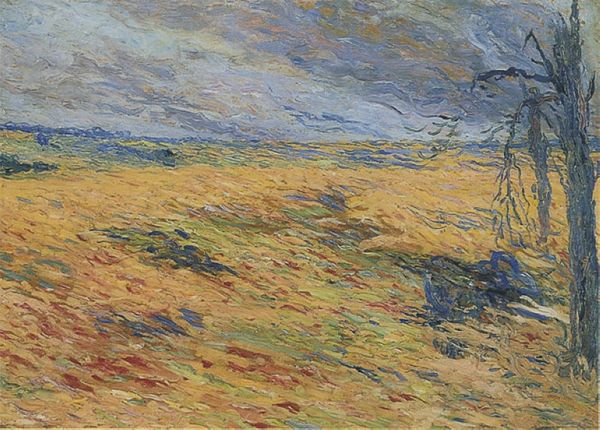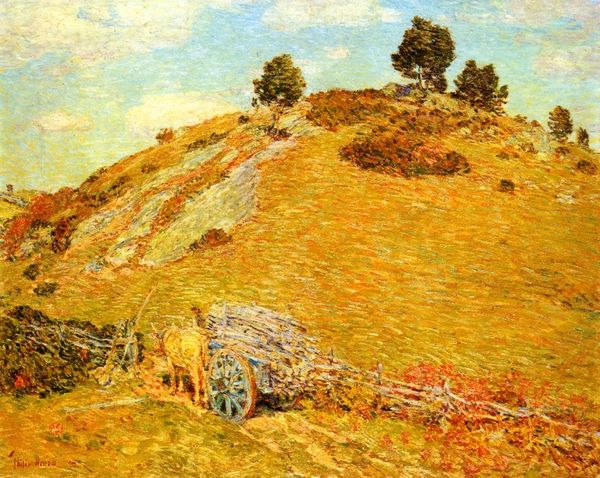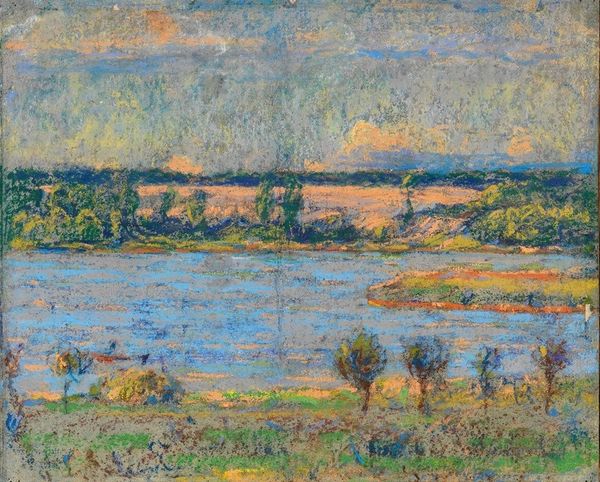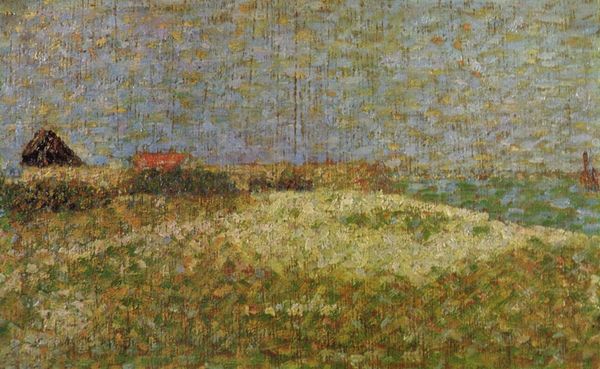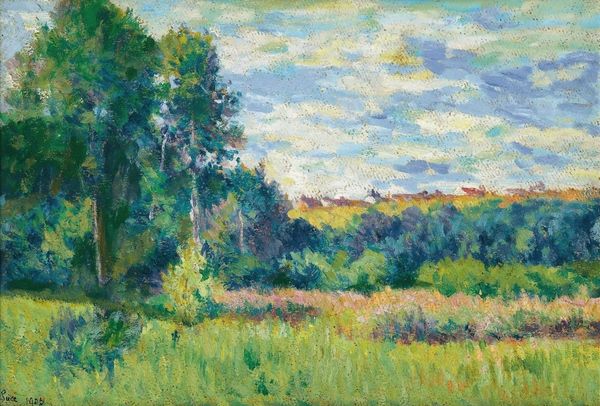
painting, plein-air, oil-paint, enamel
#
impressionist
#
painting
#
impressionism
#
grass
#
plein-air
#
oil-paint
#
landscape
#
impressionist landscape
#
enamel
#
post-impressionism
Copyright: Public domain
Curator: Looking at this painting by Henri Martin, titled "Landscape," I’m immediately struck by its sun-drenched quality. There’s almost a palpable heat radiating from the canvas. Editor: It absolutely glows. Martin's broken brushstrokes, the way he applies paint in these distinct dabs, it’s pure Post-Impressionism channeling light and atmosphere. Do you see how that technique evokes the shimmer of heat on the land? It moves me emotionally. Curator: Indeed. This work exemplifies how Post-Impressionists responded to and diverged from Impressionism. It's more than a fleeting impression of light. I’m seeing here an early example of Plein-air landscape art gaining prominence in exhibiting institutions. These painters would set out into nature in pursuit of novel representations of it. Editor: What’s fascinating is the inclusion of the harvest equipment. It becomes another symbolic element in the greater scheme of things, connoting themes like mortality or cyclical recurrence. The impressionistic landscape is also a symbolic vessel capable of depicting national sentiment or rural idyll. Curator: Certainly, it anchors the scene in a specific rural context, lending itself to nationalistic interpretations, but also hinting at broader socio-economic conditions. After all, depictions of agrarian life often became tied to political ideologies and public policies, with heavy reliance on the museum infrastructure that promoted the artform to consumers of high art. Editor: I agree, but look closely, and those dark patches—do they evoke a sense of foreboding or maybe even social stratification that often is represented as visual cues within the picture? They suggest there are deeper layers to be understood that are lurking under the surface here. Curator: A persuasive argument. It underscores how artworks function as active participants within the visual economy and represent both lived and social relations. I feel I learn something new each time I gaze into a piece like this, it continues to shift over time! Editor: It speaks to the painting's enduring power. Symbols always have a multiplicity of meanings that can never really resolve themselves, do they?
Comments
No comments
Be the first to comment and join the conversation on the ultimate creative platform.
